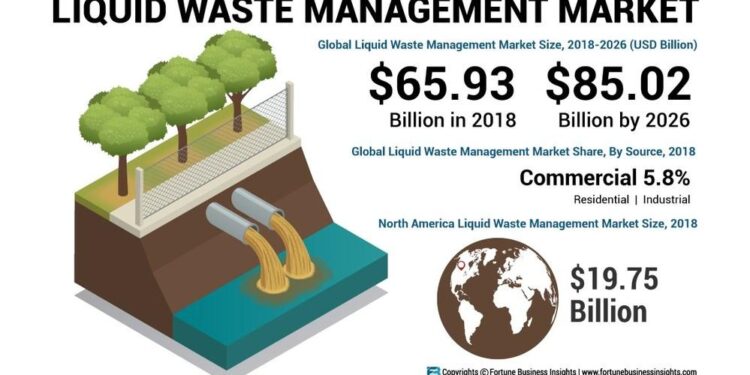The liquid waste management market is estimated to be worth USD XX million in 2024, growing at a CAGR of XX% between 2016 and 2024. The increasing awareness of the importance of recycling and composting is likely to drive the market. Moreover, governments in developing countries are offering financial assistance to industries for investing in waste management projects in order to improve the waste disposal infrastructure in these countries. However, the lack of skilled workers and high operating cost are expected to restrain the growth of the market.
Rising population, increased urbanization, and increasing industrialization are expected to drive the demand for liquid waste management solutions in the coming years.
Developing countries in Asia and the Middle East are expected to be the most lucrative markets for the liquid waste management industry. These regions have a high population density and an underdeveloped waste management infrastructure, resulting in increasing demand for liquid waste management systems. Developing countries in North America and Europe are expected to offer significant growth opportunities for players in the market.
The liquid waste management market is divided into several segments on the basis of application, type of technology used, and region. The application segment is further divided into municipal solid waste management, industrial waste treatment, and sewage treatment & disposal. On the basis of technology used, the market is classified into incineration, mechanical biological treatment, land filling, and others.
The topic of liquid waste management is one that comes up time and time again. In a world where we are constantly struggling to find new and more sustainable ways of doing things, it is essential that we take the time to think about what we are doing to our planet. By learning as much as we can about things like liquid waste management, we can help to create a cleaner and more environmentally conscious world for future generations to come
Liquid waste management is a topic that has become extremely controversial in recent years. As more and more people are becoming aware of the impact that our actions are having on the environment, it has become increasingly necessary for us to think about what we are doing to the planet that we call home. In today’s society, it is easy for us to fall into the trap of believing that we are too small to make a difference.
However, if we all work together and use our voices to raise awareness about the issues we are facing, we can make a big difference to the health and sustainability of the planet as a whole. This essay will look at the liquid waste management process in detail and discuss some of the ways in which it can be improved in the future.
The Liquid Waste Management market size, estimations, and forecasts are provided in terms of sales volume and revenue, considering 2022 as the base year, with history and forecast data for the period from 2022 to 2029. This report segments the global Liquid Waste Management market comprehensively. Regional market sizes, concerning products by types, by application, and by players, are also provided. The influence of COVID-19 and the Russia-Ukraine War were considered while estimating market sizes.
Key Questions Answered in Report on Liquid Waste Management Market
- Who are the key market players in the Liquid Waste Management Market?
- Which are the major regions for dissimilar trades that are expected to eyewitness astonishing growth for the Market?
- What are the regional growth trends and the leading revenue-generating regions for the Market?
- What will be the Market size and the growth rate by the end of the forecast period?











